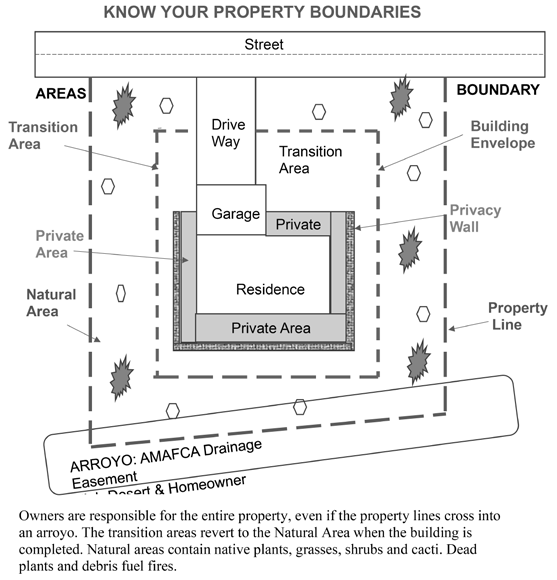Yes, It Can Happen Here
Photo by Mary Martin
Albuquerque Fire Rescue's Guidelines & Information for July 4th
We are in Stage II fire restrictions in Albuquerque. Albuquerque Fire Rescue is performing patrols and residents can report illegal fireworks use through 311. Please read AFR's detail document for information about illegal and legal fireworks as well as other restrictions and fire prevention measures.
Additional Documentation
The following are additional documentation for High Desert residents to be informed about helping to enact fire saftey measures and prevent wildfires.
How Can You Protect Your Home From Wildfire This Season?
Formed as an advisory group in mid-2019, a sub-group of the High Desert Landscape Committee, High Desert's Fire Prevention Working Group was tasked with creating a Fire Prevention and Mitigation plan for High Desert, as well as educating residents about wildfires. That Working Group now has become a formal Board Committee, the Fire Preparedness Committee (FPC), with Judy Pierson as current Chair. Homeowners interested in fire preparedness are encouraged to join or attend FPC meetings and may contact Judy Pierson at 505-220-9193 or Judy@judypierson.com.
In late 2020, the FPWG presented its report to the Board, outlining its mission, goals and work throughout the past year. The full report can be obtained from HOAMCO. The information below is from the Working Group’s Appendix 2: Fire Mitigation Checklist - Short
Form for Premier and Estate Homes. (This working checklist does not substitute for reading the full checklist and the Guidelines for Sustainability for Premier and Estate Homes.) There is no mitigation list for Builder homes which are built on smaller lots with uniform landscaping. However, the biggest fire danger to Builder homes comes from adjacent Association- or City-owned arroyos.
The FPWG will be focusing this year on making arroyos safer.
ALL AREAS:
For each area take fire prevention steps:
• Remove dead plant material, like leaf and pine needles yearly prior to fire season (March 1).
• Reduce woody shrubs, and plant with fire-resistant vegetation.
• Create vegetation islands to reduce a continuous line of fuel.
• Store firewood as far away from the house as possible.
• Trim low branches on mature trees to 16 inches above ground.
PRIVATE AREAS:
Land around home up to privacy wall
• Create a 3- to 5-foot fire break around the house using low growing native vegetation. Non-flammable hard surfaces around the house such as rock gardens, stream beds, etc. are permissible. See guidelines for your village.
• Create vegetation islands to reduce a continuous line of fuel.
• Do not plant trees close to the house. Trim back overhanging or touching branches from the roof to a distance of at least 10 feet.
• Clean roof and gutters of dead debris (leaves, needles), so embers will not ignite there.
• Store firewood as far away from the house as possible.
TRANSITION AREAS:
Land between privacy wall and building envelope
• Create a 5-foot fire break around the building envelope using low growing native vegetation. Noncombustible items like rock, gravel, and dirt can help and may be permissible. See guidelines for your village.
• Refrain from planting trees and bushes close to each other.
• Trim native grasses within the building envelope to a height of 4 inches.
• Trim ladder fuels from bushes 8-10 inches above ground.
NATURAL AREAS:
Land outside of building envelope
• Trim native grasses to 8 inches around trees and shrubs.
• Thin ladder fuels which would allow low fire to jump to higher fuel like grass to shrubs and shrubs to trees.
• Clean up potential fuels in the yard. Replace dead and dying plants, and control weeds. Remove volunteer plants within 3 feet of walls and road.
• Trees must be no less than 10 feet apart at maturity.
• For plants use High Desert Website “Approved and Prohibited High Desert Plants...or “Can I Plant That?”
(Originally appeared in Apache Plume newsletter, February 2021)

Fire Preparedness Podcasts!
Our Fire Preparedness Committee is ramping up for the 2022 fire season. They have shared the following two podcasts as relevant and timely information for the residents of High Desert.
"First Person: 2 Colorado residents on how Western wildfires have shaped their lives"
"How cities in the West can prepare for the Western wildfire threat"